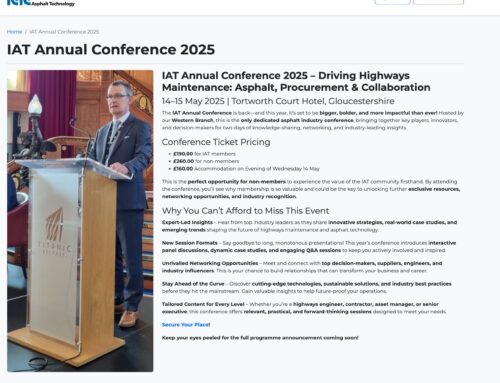Efforts to improve sustainability in asphalt paving are leading industry experts to explore more environmentally friendly methods to build and repair roadways. Using reclaimed asphalt pavement (RAP) that can reduce, if not eliminate, the need for new aggregate and binder in a mix has become an environmentally friendly and cost-effective consideration. Of 1,305 production plants surveyed by NAPA in 2022, 100% had incorporated RAP into their production. However, state agencies have also reported some concerns such as inconsistent RAP binder content, RAP gradations, and ‘poor’ performance as limitations to using RAP. Proper stockpile management and knowing the basic properties of RAP are essential to engineering durable, long-lasting mixes.
Understanding best practices for how reclaimed asphalt pavement can be processed and prepared for production can help agencies maximize their RAP use. What follows is a suggested step-by-step walk through of how RAP is processed and prepared for use in an asphalt mix.
- Milling – Most RAP is sourced through the process of milling existing roadway surfaces. Milling machines are used to grind down the old asphalt pavement to a specified depth. For most projects, only two inches of the wearing course are removed. For larger projects, up to 8-10 inches of material may be milled. The RAP material is then transported to a recycling facility or plant.
- Crushing – The newly acquired material is crushed to produce particles of various sizes, often starting with the largest pieces collected from a job site. This helps to make the material more manageable to work with. Crushing equipment can include jaw crushers that break down larger chunks and impact crushers that create smaller aggregate pieces.
- Screening and Fractionating – The RAP is screened to remove non-asphalt materials or other contaminants. Screening also helps sort the different RAP particles by size such as course and fine. This is often achieved by passing the material through a series of vibrating screens. This also helps better organize the RAP particles by size. When grading the material, minimizing the dust in RAP is also important.
- Homogenizing – Each RAP fraction is homogenized and graded to confirm that the particles are consistent throughout the stockpile. This helps with quality control throughout the mix design process to ensure that specification requirements are being met.
- Storing – RAP stored for later use should be treated with the same care as virgin materials. Storing RAP in silos, sheds, or under tarps to reduce the amount of moisture in the material can help preserve quality and reduce the need for as much costly and time-consuming aggregate heating.
- Characterizing – RAP samples are analyzed by mix design engineers to determine gradation, bitumen content, and bitumen grade, among other characteristics. At this stage, the bitumen content coming from the RAP is estimated, and the decision is made whether to incorporate any virgin aggregates or bitumen in the mix.
- Rejuvenating – Because RAP binder contains aged bitumen that changes in chemical composition over time, an effective asphalt rejuvenator should be added to the mix design. An asphalt recycling agent like ReLIXER® can restore the functional properties of the aged bitumen, helping to create a long-lasting, durable roadway surface.
- Formulating – Using established mix specifications, technicians determine the amount of RAP, virgin material, and rejuvenator needed to optimize the mix and functional properties. In many cases, balanced mix design is helpful in meeting grade and quality requirements set by departments of transportation.
- Producing – With the specifications and mix design established, managers can run the RAP mix through their mix plant; the quantity of RAP will depend on the plant type. While plant operations will differ, controlling the moisture content of the RAP will play an important role in the overall quality and performance of the mix. Advancements in hot mix plants and equipment have greatly added to the production of high-quality consistent mixes with higher RAP content.
Sripath remains committed to supporting the asphalt industry with innovative solutions to ongoing challenges. The use of RAP in high-performing mixes relies on the incorporation of an effective rejuvenator. ReLIXER is Sripath’s answer to the need for an ideal asphalt recycling agent. ReLIXER is an environmentally friendly rejuvenator sourced from green bio-based oils. Highly dosage efficient, ReLIXER reduces the need for virgin bitumen and fresh aggregates while restoring the functional properties of the aged bitumen in RAP mixes.
Learn more about ReLIXER, asphalt rejuvenation, and Sripath’s sustainability focus by emailing info@sripath.com.





